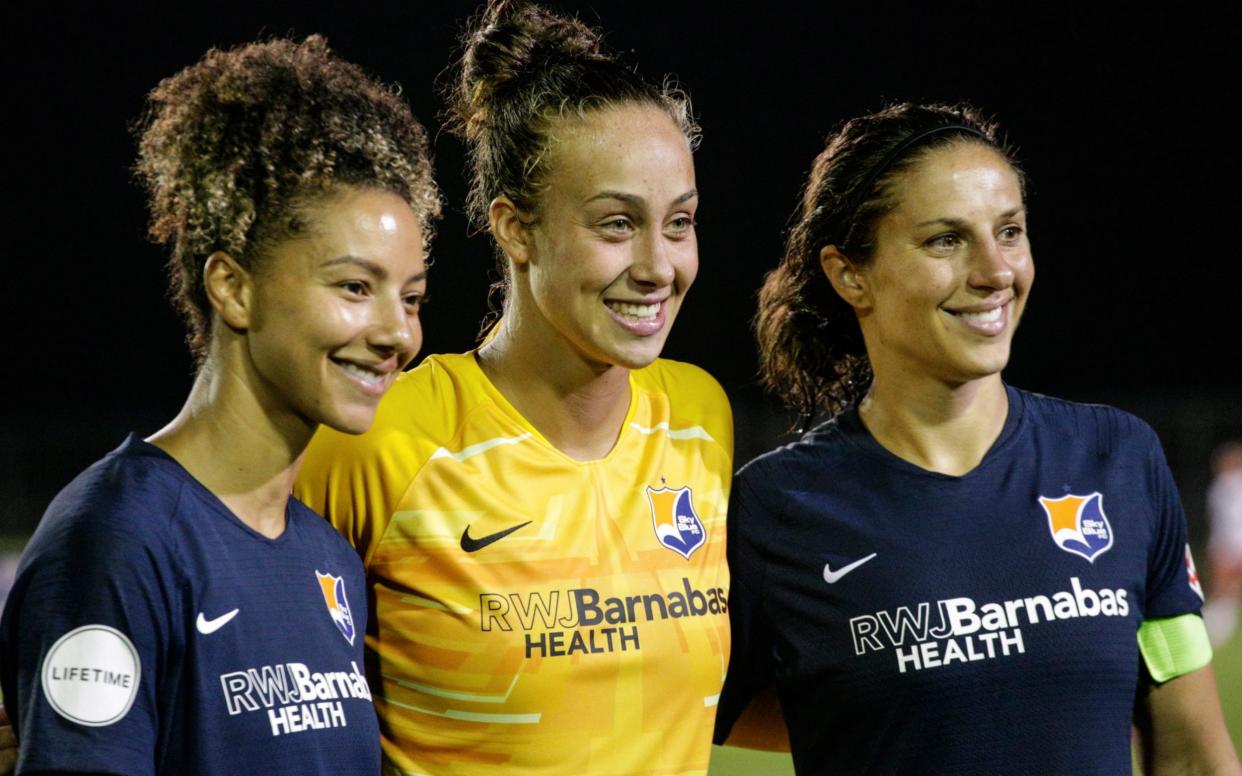Where English women's football saw obstacles, the US saw opportunities


"To think we're sitting here in the middle of a major pandemic and we're still able to turn business opportunities within this league shows to its ability, not only to survive, but find ways to continue to thrive in this environment."
That is the view of Alyse LaHue, general manager of National Women's Soccer League club Sky Blue FC.
There will be no women's football in England for at least six months, no women's team sport at all, in fact. Meanwhile in the USA, the first league — male or female — to return post-coronavirus lockdown will be the NWSL. The benefits are already showing, with new major sponsors signing up, including a three-year deal with telecommunications company Verizon.
The season will look very different, in the form of the month-long, behind-closed-doors Challenge Cup competition hosted entirely in Utah between June 27 and July 26. It is not perfect either, as concerns remain over it mostly being played on artificial pitches. Plus, the intensity of seven matches over four weeks (for teams that reach the final) is a difficult ask for players, considering the much altered pre-season preparations. Additional substitutions may be allowed in matches to combat this, but players also have the freedom to opt out altogether, with the guarantee of full pay and benefits regardless of whether they play.
The league's most high profile player, Megan Rapinoe, is reportedly unlikely to feature for OL Reign, and other US women's national team players are also doubts - which would be a big blow to the competition. But there will be women's football this summer, and that is much more than what can be said in this country.
Here, while the Premier League found a way to ensure the season is completed, the Football Association last week ended the top two tiers of women's football. With no announcement on sporting outcome made in the 11 days since, players' contracts are ending without renewal at an alarming rate as the uncertainty continues.
At a time where there is more space than ever to attract new fans, the NWSL is taking the opportunity, as the alternative was a year-long vacuum of women's club football in the USA.
"Having a gap year would have been a tremendous thing to overcome after so much momentum we've had," LaHue told Telegraph Sport, crediting the league's new commissioner, Lisa Baird, with driving the initiative. "Though it doesn't look like a regular season, it's been a great pivot for us to come up with some level of competition, for the players, for the fans to remain engaged, even for the sponsors to remain engaged."
Their existing partners are all on board, with broadcasters Twitch and CBS streaming all 25 matches of this new competition online, as well as CBS showing the opener and final live on network television - a historic first for club women's football in the USA.
The innovation shown by the NWSL is heartening, and in part is because their league had not yet begun when the pandemic struck, unlike with the WSL in England which was nearing its climactic final quarter. But the US league's adaptive approach has mirrored that of the Frauen-Bundesliga in Germany, in tackling the new coronavirus reality with problem-solving, leaving no stone unturned. Mothers in the NWSL will even have accommodation guaranteed for their children at the Challenge Cup.
Covid-19 testing is an expensive, mandatory part of the new world order in sports, but an investment the NWSL was ready to make. In the Frauen-Bundesliga, which returned to action last weekend, testing is partly funded by the country's richest men's clubs. Meanwhile in the WSL, the majority of whose clubs have male counterparts playing in the richest football league in the world, the cost of testing was deemed too debilitating and a major reason the league ended.
LaHue says being a smaller operation, made up of teams independent from men's major sports leagues in the US, made the NWSL "nimble" enough to lead the country back into live sports first. But as the shutdown of women's team sport in this country has shown, the opposite is true here. Instead, women's sports visibility is sidelined when lucrative broadcast deals are the only driving forces ensuring seasons are not abandoned.


